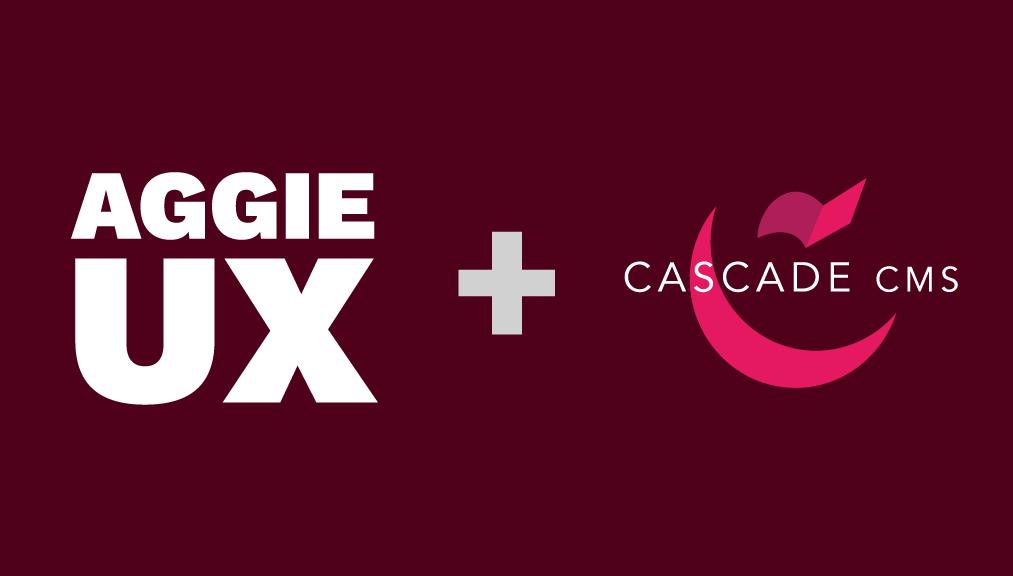AUX For Content Creators
Content is the foundation a good website. Aggie UX strives to create a positive user experience across Texas A&M University websites. Find resources about writing accessible web content and documentation for updating Aggie UX websites.
Tips for Writing Accessible Web Copy
As a content creator, you have a direct impact on the accessibility of a website. Follow these three tips to address the most common content-related accessibility issues on Texas A&M websites.
Learn more about accessibilityWrite Accessible Link Text
This means you should hyperlink the words in a sentence that reveal where a user will go if they click the link without having to read the surrounding text. For example, links that say “click here,” “this link,” etc. are not accessible. Instead, link words that tell the user what to expect if they click it: “Open the Freshman Application,” “View the 2024 Course Catalog,” etc.
Use Headings to Separate Content
Web content is better and more accessible when it’s skimmable! Use headings to help users know what they want to read — and what they don’t. Headings should be plain language (read: not clickbait) and make it clear what content is beneath them.
Also please note that headings must be ordered; this is important for accessibility. All pages start with an H1 heading (the big heading at the top of the page). And subheadings below that should be H2s. If a section of content needs subheads within it, simply go down one heading level. Think of going up and down heading levels the same way you would indent a page outline.
Using Bold, Italics and Underlines
Using different formatting options, such as bold, italics and underlining, is often used as a way to draw attention to a word or phrase. On the web, use bold and italics sparingly to emphasize a point. Never use underlining as a method to emphasize text; it often confuses people because underlines typically indicate a word is linked.
Resources for Content Creators
Editing Aggie UX Cascade Websites
Learn how to edit Cascade websites without ever touching code using the Aggie UX page builder.
Go to AUX Cascade documentationAggie UX Templates
Get content strategy and view examples for different web pages based on their use case.
View Aggie UX template recommendationsUnderstanding Aggie UX
Aggie UX (AUX) is a robust system with many moving parts. To keep everyone on the same page, we’ve created an AUX Glossary with common web terms and terms and phrases unique to our design system.
Visit the AUX glossaryVoice and Tone
Refer to the voice and tone section of the brand guide for style guidance on writing on behalf of Texas A&M University.
Discover Texas A&M’s voiceWorkshops and Trainings
Due to popular demand, we will be hosting workshops for Aggie UX. Please join our waitlist to receive email notifications about upcoming trainings and workshops. Cascade and accessibility training will be required if requesting access to the AUX Page Builder.
Join the WaitlistTopics we will cover:
- Aggie UX Page Builder Demo
- Requesting Your Install
- Basics of Accessibility
- Cascade for Content Editors
- Design System in Figma
- Page Templates




